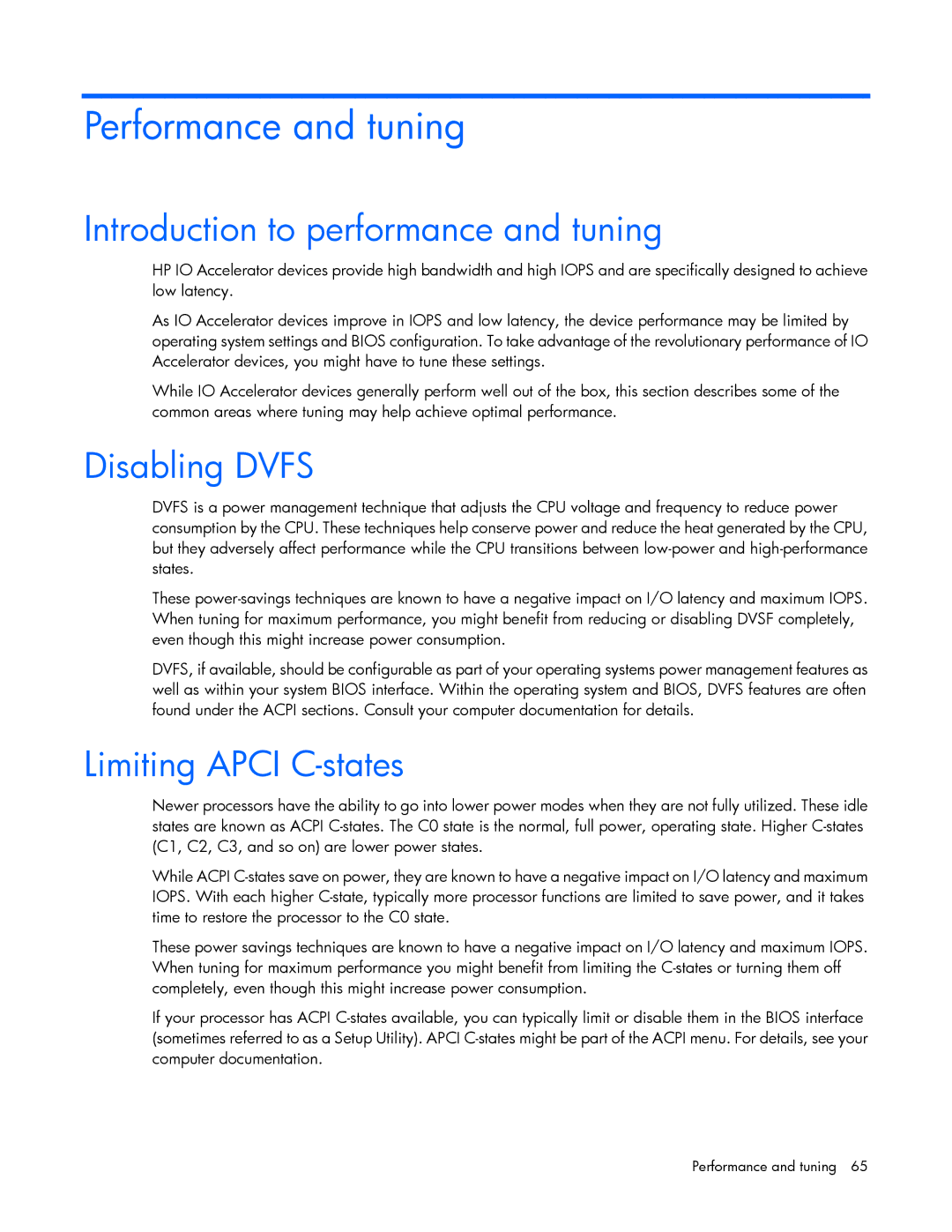Performance and tuning
Introduction to performance and tuning
HP IO Accelerator devices provide high bandwidth and high IOPS and are specifically designed to achieve low latency.
As IO Accelerator devices improve in IOPS and low latency, the device performance may be limited by operating system settings and BIOS configuration. To take advantage of the revolutionary performance of IO Accelerator devices, you might have to tune these settings.
While IO Accelerator devices generally perform well out of the box, this section describes some of the common areas where tuning may help achieve optimal performance.
Disabling DVFS
DVFS is a power management technique that adjusts the CPU voltage and frequency to reduce power consumption by the CPU. These techniques help conserve power and reduce the heat generated by the CPU, but they adversely affect performance while the CPU transitions between
These
DVFS, if available, should be configurable as part of your operating systems power management features as well as within your system BIOS interface. Within the operating system and BIOS, DVFS features are often found under the ACPI sections. Consult your computer documentation for details.
Limiting APCI C-states
Newer processors have the ability to go into lower power modes when they are not fully utilized. These idle states are known as ACPI
While ACPI
These power savings techniques are known to have a negative impact on I/O latency and maximum IOPS. When tuning for maximum performance you might benefit from limiting the
If your processor has ACPI
Performance and tuning 65
